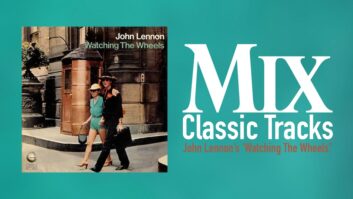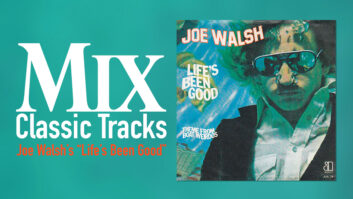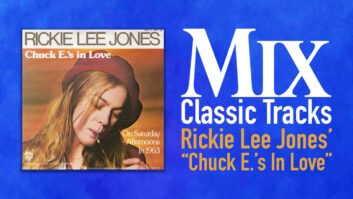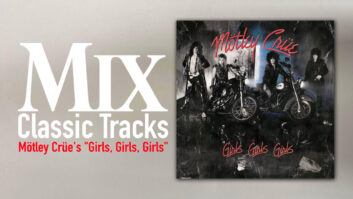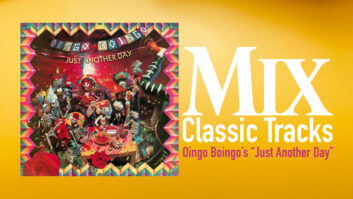
October means playoff baseball and the World Series, so what better “Classic Track” to talk about this month than John Fogerty and “Centerfield”? Not only does 2010 mark the song’s 25th anniversary, it also earned the supreme honor this past summer of being formally “inducted” into the Baseball Hall of Fame in Cooperstown, N.Y.—it plays there ’round the clock.
With its references to Willie Mays, Ty Cobb, Joe DiMaggio and the Mighty Casey, “Centerfield” is the rare rock tune that is explicitly about sports. More unusual is that it became a hit: Aside from being the title track of a Number One album in 1985, the song made the Billboard Top 50 as a single. But even more remarkable has been its staying power in the culture as both a staple of Classic Rock radio ever since its release, and its use on countless baseball telecasts, documentaries, you name it—hence its place in the Hall of Fame. After “Take Me Out to the Ballgame” (originally recorded in mono in 1908!), “Centerfield” is the most popular song ever written about our National Pastime.
“It was clear to me that songs about sports and rock ’n’ roll really do not co-exist very well,” Fogerty told the Associated Press earlier this summer, “but I did it anyway. I just thought, ‘You know, I’m going to risk looking lame.’
“As a little boy I loved baseball. I dreamed of being a major-league player. Of course it didn’t work out that way. But to be associated at all, in any way [with the Hall of Fame] is a wonderful honor.”
Most people know Fogerty primarily as the singer/songwriter/guitarist for the San Francisco Bay Area–based group Creedence Clearwater Revival, who churned out hit after hit in the late ’60s and early ’70s, including such tunes as “Proud Mary,” “Green River,” “Bad Moon Rising,” “Down on the Corner,” “Fortunate Son” and others. After Creedence’s messy break-up in 1972, Fogerty went solo—truly solo—playing all the instruments on an album of country and gospel cover tunes under the name the Blue Ridge Rangers. (In fact, on the original pressing, Fogerty’s name didn’t even appear on the jacket.) An eponymous album on Asylum in 1975—also a totally solo affair—was only a moderate success, and then in 1976 he shelved an album both he and the label deemed unworthy of release, initiating a decade-long absence from the public eye while he dealt with various legal issues surrounding his Creedence legacy.
So Fogerty didn’t really have a current career when in the fall of 1984 he called The Plant Studios in Sausalito, Calif.—across San Francisco Bay from his home in the East Bay town of Albany (he grew up in nearby El Cerrito)—and said he wanted to come in and make an album. Once again, Fogerty chose to play all the instruments and handle the vocals himself. Jeffrey Norman, who had been a staff engineer at The Plant before splitting off recently as an independent, was recommended for the project by Plant general manager Jim Gaines. “I was in the right place at the right time,” says Norman, who these days runs Mockingbird Mastering in Petaluma (Sonoma County, Calif.). “Most major artists came with their own engineer and entourage; he didn’t. It was just John.”
Because the project was not going to require a giant live room for a band, Norman, Fogerty and assistant Mark Slagle were assigned the smallest room in the complex, Studio C, variously known as The Pit and the Sly Stone Room (for the records he made there in the early ’70s). The 420-square-foot room—with two iso booths and a 140-square-foot control room—was mostly considered a demo and overdub studio, but Fogerty was delighted, as he told Mix writer Elizabeth Rollins in early 1985: “The fact that it was just my size was kind of cool because there’s just one of me… and I would set up the equipment as if each guy was there.” Studio C was equipped with Trident 80B console, Studer A-80 VU MKIV 24-track (running Ampex 456 tape) and Sierra Westlake Hidley monitors (as well as the then-ubiquitous Yamaha NS-10s).
“I had never met John,” Norman says, “but he turned out to be a very nice guy—very pleasant—and also very confident, but in a good way. He knew exactly what he was doing. He came in with his guitars and some amps and keyboards and drums, and he had this little notebook with every song delineated—all of the parts, all of the exact amp settings: Guitar number one is going to do this rhythm part, using this amp at these settings. He’d say, ‘Okay, I have three guitar parts on this song, I have a sax on this,’ and so on. Each song started with a rhythm guitar and a click track and sometimes a scratch vocal, and that would be the basic track. Once that was done, he would then play the drums to that track and build it from there.” In that era, Fogerty had his own 8-track studio at home and he had clearly done plenty of pre-production on his own, though Norman says he never heard any demos. For his part, Norman was mostly happy to defer to Fogerty’s ideas and inclinations.
Classic Tracks: Kenny Roger’s “The Gambler”
In that March ’85 Mix article, Fogerty recalled of Norman, “He was only a mild knob twiddler. We laughed about that. That’s a Pete Townshend expression. I would say, ‘Wait a minute, wait a minute. I’ve been working on this a long time.’ I would have him repeat to me what he was doing. This was the first day, which we ended up having to do over. Most of what he was doing was fine. I just didn’t want him to get carried away because most engineers, just because it’s there, say, ‘Well, I’m supposed to do something, I’ll try this.’”
Fogerty did rely on Norman for mic choices and outboard settings, “but any time I wanted to use EQ on a specific drum, he always wanted to know exactly what I was doing,” Norman says. The engineer mainly used the Trident console’s onboard EQs, “though I didn’t need that very much. There was no EQ on any of his guitars. He had it dialed.” Guitar amps were miked with Neumann 87s and Shure 57s. He also used 87s for drum overheads. Other drum mics included a 57 on the snare (“maybe in combination with another mic,” Norman offers), a Neumann KM84 on the hi-hat and Senn-heiser 421s on the toms. Bass was direct. Because of the negligible acoustic properties of Studio C, everything was close-miked with no room mics used. Instead, Norman used EMT 140 reverbs, as well as one of the new kids on the block in that era: the AMS digital reverb, a box Fogerty liked so much he bought one for himself after the sessions.
As for Fogerty’s vocals, “Although he did some scratch vocals along the way,” Norman notes, “I remember the first time we did a lead vocal, it was like, ‘Oh, my God, that’s John Fogerty!’ He was really getting to that voice!” [Laughs.] The singer would usually do just two or three takes of each vocal. “There was a little comping, but not a lot,” Norman adds.
In the case of the song “Centerfield,” there were a few sonic touches that give it a distinctive sound. “My main contribution was the gated [AMS] reverb on the synth ‘claps,’” Norman says. “It made it kind of unique—you hear that and you know what song it is instantly. The crack of the bat is a sound that John brought in. He had it on a synth as a sample, and I believe he got it from the movie Damn Yankees, which is cool. It sounds a little fake, I guess, but it’s perfect for that song. He also did some changing of parts on that song. Like the organ part he added, which is great because it sounds like a stadium organ—I believe that was not in his little book originally.”
The Centerfield album was recorded and mixed over a period of about six weeks at the end of 1984, with Norman working steadily five days a week. It was mixed in The Plant’s Studio A on a Trident TSM 80 console equipped with Melquist automation. “We would talk about reverbs and I would get some blends and get things to what I thought was close, and then John would modify it if he wanted,” Norman says.
At the time, Fogerty told Rollins in Mix that after he and Norman had mixed about half the album, “I went back home and put on a Creedence record, and said, ‘Yeah, new stuff matches, sounds fine.’ Then I put on a contemporary record, and said, ‘Whoa!’ The contemporary record just jumped right out at me and the Creedence just sort of laid there. So I went back to the drawing board. I had to work with the correct balances between higher and lower registers. Nowadays, you can print a lot more on a record. It used to take me about an hour-and-a-half per tune. Now we averaged 10 to 12 hours.”
Whatever sonic legerdemain Fogerty and Norman employed on the Centerfield album, it seems to have worked. It was an out-of-the-box smash that brought Fogerty the solo success that had been so elusive since his Creedence days. It started with the Number One rock single, “The Old Man Down the Road”—a song so Creedence-like that Saul Zaentz, boss of Fantasy Records, CCR’s former label, actually sued Fogerty for self-plagiarism: a dumb, frivolous suit if there ever was one. Then different radio formats began to add various other songs to their playlists, including “Centerfield,” the Sun Records–influenced “Big Train (From Memphis)” and “Rock and Roll Girls”—all modern classics. The album remains Fogerty’s biggest seller.
This article was first posted in October, 2010.
